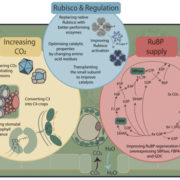
Review: Increasing metabolic potential: C-fixation (Essays Biochem) $
Blog, Plant Science Research Weekly, Research, Research BlogIncreasing carbon fixation through the Calvin-Benson-Bassham (CBB) cycle is a viable strategy to boost crop yields, as has been demonstrated through both experimental and modelling approaches. In this review, Andralojc et al outline the most recent advancements in this research field. The authors…

The amount of nitrogen used for photosynthesis modulates molecular evolution in plants (Mol Biol Evol)
Blog, Plant Science Research Weekly, Research, Research BlogPlant growth is often limited by the availability of nitrogen (N), which is required to synthesise monomers and macromolecules, and is especially important in the synthesis of the carbon assimilating enzymes of the Calvin-Benson-Bassham (CBB) cycle. In this article, Kelly has demonstrated that photosynthetic…
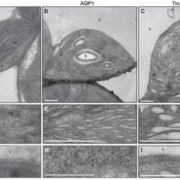
Physiological performance of transplastomic tobacco plants overexpressing aquaporin AQP1 in chloroplast membranes (JXB)
Blog, Plant Science Research Weekly, Research, Research BlogA major factor in determining photosynthetic rate is the availability of CO2 at the site of fixation in the chloroplast stroma. Classically, this has been thought to be mainly limited by stomatal conductance (diffusion from the air, through stomata, to sub-stomatal cavities). However, more recently…

Cell wall properties in Oryza sativa influence mesophyll carbon dioxide conductance (New Phytol) $
Blog, Plant Science Research Weekly, Research, Research BlogMesophyll CO2 conductance (gm) is an important factor in determining the concentration of CO2 at the site of fixation in the chloroplast stroma, and as such is crucial for determining photosynthetic capacity. The mesophyll cell wall provides a major site of resistance to CO2 diffusion into the stroma…
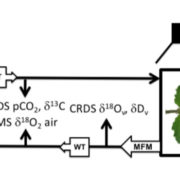
Measurement of gross photosynthesis, respiration in the light, and mesophyll conductance using H218O labeling (Plant Physiol)
Blog, Plant Science Research Weekly, Research, Research BlogIt is relatively simple to determine net O2 flux in leaves. However, this data provides no information on the underlying processes responsible for this flux, namely gross oxygen production (GOP, water splitting), mitochondrial respiration in light, Rubisco oxygenation, and photorespiration. In this…
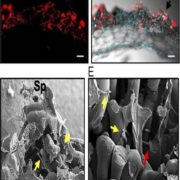
What We're Reading: May 11th
Blog, Research, Research Blog, WWR Full PostPhotosynthesis Special Issue
This week's 'What We're Reading' summarizes the latest papers from the field of photosynthesis research. This includes three reviews: the first focuses on the effect of elevated CO2 on secondary metabolism, the second looks at ways to improve carbon fixation, and the…
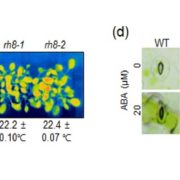
RH8-PP2CA interaction in ABA signaling ($)
Plant Science Research Weekly, Research BlogIt is well understood that abscisic acid (ABA) inhibits PPC2A phosphatase activity, which subsequently relieves phosphate-induced inhibition of a kinase interacting partner. This pathway composes the ‘core’ ABA signaling pathway, activating process involved in the ABA response such as stomatal closure…
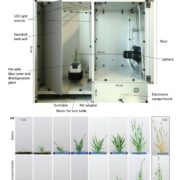
The “PhenoBox”, a flexible, automated, open-source plant phenotyping data solution (OA)
Plant Science Research Weekly, Research BlogHigh-throughput plant phenotyping systems are an excellent tool for analyzing large plant populations, providing better understanding of plant growth, productivity and performance under stress conditions. Unfortunately, high-throughput platforms are also high on costs and limited in their adaptability…

Phytophthora palmivora establishes tissue-specific intracellular infection structures in the earliest divergent land plant lineage (OA)
Plant Science Research Weekly, Research BlogSurprisingly little is known about the pathogens of liverworts. Carella et al. explored the interaction between the broad-host range pathogenic oomycete Phytophthora palmivora and the model liverwort Marchantia polymorpha. They found that the pathogen enters the host tissues and proliferates in intercellular…

